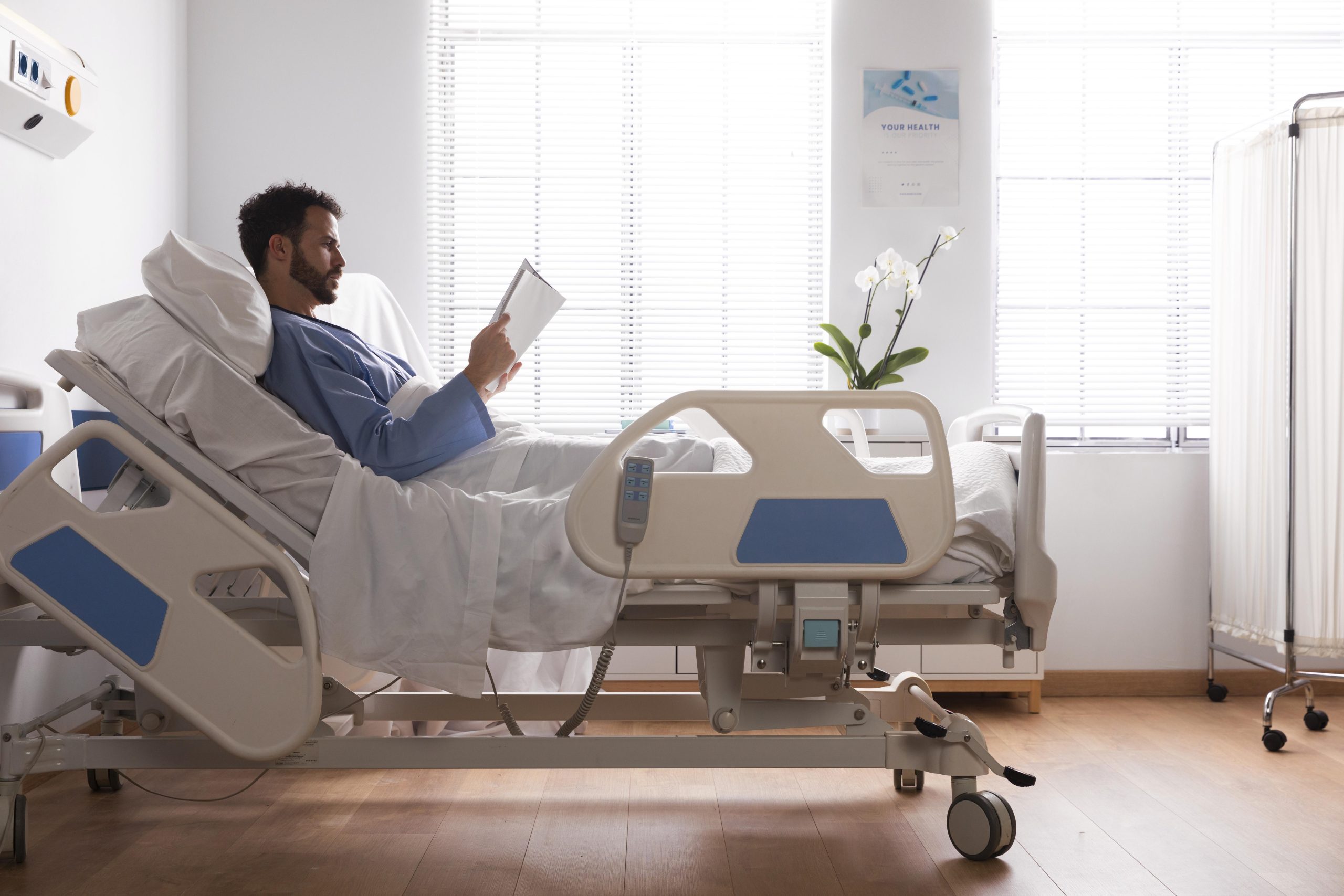
How to choose a hospital bed?
Two basic criteria should be taken into account when choosing a medical bed: the
type of facility or health unit where it will be used and the type of patients for whom it is intended.
Medical beds are used in various fields:
- Nursing homes
- Home Assistance
There are also beds with specific characteristics, intended for certain types of patients:
- Elderly persons or persons with reduced mobility
- Overweight persons (bariatric beds)
- Children (paediatric beds)
Hospital beds can have features and functions that increase the comfort of patients and healthcare personnel, facilitate patient transport, increase safety, etc.
Patient comfort
There are many features and functions that affect the comfort of patients and nurses, as well as ease of transport and safety. Below is a short list of the main features that should be taken into account depending on the type of patient and the type of care to be provided.
- Number of articulated bed sections, or joints
- Possible positions, Trendelenburg, sitting position, etc.
- Presence of a leg lifting mechanism
- Bed height: a very low bed, for example, will positively affect the autonomy of some patients.
Ergonomics for hospital staff:
The comfort of hospital staff is also of paramount importance. The ergonomics of the bed also depends on certain features and functions of the bed. Among the most ergonomic beds are the following:
- Bed with electrically adjustable backrest
- Height-adjustable bed with remote control
Easy bed handling
Hospital beds can have features that positively affect the ease of transporting a bedridden patient, e.g. from one place to another
- Pedal bed (the pedals are accessible from each side and allow the wheels to be locked and unlocked)
- Motorised mobile bed.
Patient safety
To increase patient safety and avoid the risk of falls, a medical bed can be equipped with:
- Removable barriers
- Very low bed, to limit the risk of serious injury in the event of a fall
Price
The cost of a hospital bed will naturally depend on the type of bed and the options and accessories it has. Manual beds, for example, are for obvious reasons less expensive than electric beds and are a limited solution for patients who risk remaining in the same position for a long time. Semi-electric beds, finally, represent an intermediate solution.
How to choose a medical bed for home care
Beds intended for home care may have different characteristics and functions from beds intended for hospitals. The companies offering these models often pay even more attention to patient comfort and bed aesthetics. The main criteria to consider when choosing and purchasing a home care bed are described below.
Ease of use:
Some features facilitate the daily use of the bed, such as the electric operation of the frame joint, the easy tilting of the backrest, the width of the bed, etc.
Aesthetics
Home care beds exist in a wide variety of designs, materials and finishes (e.g. wood), so that the patient can choose a model that suits the style of his or her room.
Dimensions
In contrast to hospital beds, home care models also exist in double bed format,
How to choose a hospital bed for hire.
The characteristics of an electric hospital bed for hire are the same as those for purchase. The bed must enable medical personnel and assistants to carry out treatment with less physical effort.
The advantages of renting are numerous.
- Being able to choose a very advanced bed without excessive financial outlay.
- To be able to use a service for a fixed period of time while waiting for the asl to deliver the medical supplies.
- Having the aids at home in a short time, often with a maximum of 24 hours.
Etcs......
What type of mattress to choose for an orthopaedic hospital bed
There are several factors to consider when choosing a hospital bed mattress, ranging from flexibility to thickness, from washability to anti-decubitus properties.
Flexibility
The mattress should not be too rigid so that it can adapt to the different movements of the bed frame.
Thickness
Patient comfort will largely depend on the thickness of the mattress. If the patient has to spend more than 12 hours a day in bed, it is preferable to invest in a thicker and thus more comfortable mattress.
Washability
The mattress should be easy to wash. For people suffering from incontinence, it is essential to opt for a mattress with an antimicrobial cover.
It is also advisable to choose a waterproof and stain-resistant mattress and cover.
Antidecubitus
Some mattresses reduce the risk of pressure ulcers. They can be made of viscoelastic foam or pneumatic. The latter are also called inflatable mattresses. Viscoelastic mattresses distribute the patient's weight evenly and adapt to variations in weight and pressure of different parts of the body, preventing pressure sores from forming. Pneumatic mattresses, on the other hand, consist of a number of air cells whose pressure is automatically regulated by a compressor.
